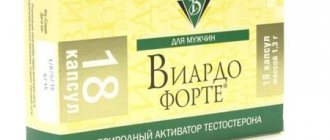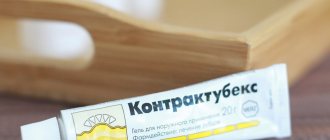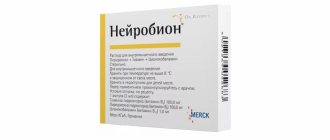pharmachologic effect
An antifungal drug for external use with a wide spectrum of antifungal activity. In small concentrations, terbinafine has a fungicidal effect against dermatophytes (Trychophyton rubrum, Trychophyton mentagrophytes, Trychophyton verrucosum, Trychophyton violaceum, Trychophyton tonsurans, Microsporum canis, Epidermophyton floccosum), yeast fungi (mainly Candida albicans) and certain dimorphic fungi (Pityrosporum orbiculare).
Activity against yeast-like fungi, depending on their type, can be fungicidal or fungistatic.
Terbinafine does not affect the metabolism of hormones or other drugs.
The minimum inhibitory concentration for Trychophyton rubrum is 0.001-0.06 μg/ml. For onychomycosis of the hands, the effectiveness of treatment is 95%, for onychomycosis of the feet - more than 90%. With chronic dermatophytosis of smooth skin, remission is achieved in 75-95% of patients. Subjective improvement in the treatment of progressive candidiasis of smooth skin and lesions of large and interdigital folds, paronychia, caused by Candida albicans and resistant to therapy with nystatin, levorin in combination with clotrimazole and miconazole, occurs within 3-4 days, and complete resolution of the process occurs after 3-5 weeks
Comparative pharmacoeconomic assessment of the use of antimycotics of the terbinafine group
It is known that most of the drugs sold in the Russian Federation are not original drugs, but their generic analogues. An increase in the share of generic drugs is a clear trend in the development of pharmaceutical markets in all developed countries. This area is supported by WHO within the framework of the Essential Medicines program. After the expiration of the patent, any pharmaceutical company can acquire the right to produce its own version of the original drug - a reproduced drug, or generic (from the English generic - general, group, generic). The advantage of generics is their relatively low cost, which is explained by the fact that the creation and registration of a generic does not require the same costs as the creation and testing of the original product. First of all, long-term clinical trials are not conducted, and the similarity of the properties and therapeutic effects of generic and original drugs is determined in pharmaceutical and biological equivalence studies.
Preparations are equivalent from a pharmaceutical point of view if they contain the same amount of active substance and comply with current international production standards, as determined by special pharmacopoeial tests. The requirements for the production of generics and original drugs are the same and comply with the rules of Good Manufacturing Practice (GMP). Bioequivalence (pharmacokinetic equivalence) is defined as the identity of two pharmaceutically equivalent drugs according to the main pharmacokinetic parameters (the degree and rate of absorption of the drug, the time to reach and the value of maximum concentration in the blood, the nature of distribution in tissues and body fluids, the type and rate of excretion) in studies involving healthy volunteers. An important feature of real clinical practice is the differences in the preferences of doctors when prescribing medications and patients when purchasing specific drugs in the pharmacy chain. Thus, some doctors, guided by “concern” for the patient’s financial well-being, prescribe cheap drugs that often do not comply with GCP and GMP standards, while others are inclined to use expensive original drugs, which often do not have real clinical advantages over cheaper generics . A scientifically based, rather than intuitive or empirical, choice of drug is required, which is possible by conducting clinical and economic studies based on the foundations of evidence-based medicine and the results of comparative clinical trials. The results obtained will make it possible to assess the real significance for practice of the drugs being studied, as well as to determine the cost of additional benefits that certain drugs have.
Due to the significant increase in the incidence of mycotic infections caused by dermatophytes, adequate selection of antifungal agents for empirical therapy is becoming increasingly important. The appearance on the domestic market of a number of antimycotics of the terbinafine group expands the choice of options for practitioners.
Considering the socio-economic situation in the country, the assessment of the minimum cost of treatment and the cost/effectiveness ratio are of particular importance. Rational use of antimycotic therapy from the standpoint of both clinical and economic efficiency can lead to significant cost savings, which is especially important when domestic healthcare resources are limited.
The purpose of this study is to conduct a comparative pharmacoeconomic analysis of the use of antimycotics of the terbinafine group, available on the domestic drug market, in various clinical situations: 1) in patients with onychomycosis of the hands and feet, 2) in patients with mycosis of smooth skin, and 3) in patients with trichomycosis.
For comparison, we selected the main drugs of this group available on the pharmacy market: Lamisil, Terbizil, Binafin, Exifin, Fungoterbin, Terbinox.
Pharmacoeconomic analysis was carried out in 2 stages:
- Development of a treatment model in accordance with industry standards.
- Estimating the cost of treating the disease.
When calculating the cost of treatment, we took into account the following characteristics:
- Cost of the drug.
- Cost of treatment.
Data on the cost of medicines and medical products, the website “Medicines in Moscow Pharmacies”. All cost indicators are presented in rubles.
To estimate the cost of therapy for onychomycosis, we considered two- and three-month courses of taking the drug at a daily dose of 250 mg.
The results of the study are presented in table. 1.
As can be seen from the table, the most expensive course of treatment is Lamisil, and the most affordable are courses conducted by Terbinox and Binafin.
To estimate the cost of therapy for microsporia and trichophytosis, we considered six- and five-week courses of therapy of 250 mg of the drug per day.
The results are presented in table. 2.
For the treatment of microsporia and trichophytosis, the most affordable course was Binafin and Terbinox. The most expensive course was Lamisil.
The evaluation of ointment forms of terbinafine encountered some difficulties, since various drugs are packaged in tubes of 10 g and 15 g. For ease of calculation, we estimated the cost of 15 g of the drug. The results are presented in table. 3.
The most expensive cream is Lamisil, the most affordable is Terbinox.
The data obtained indicate that therapy with the original drug Lamisil is the most expensive, while generic tablets Terbinox and Binafin, as well as Terbinox cream, significantly save the patient’s money.
Contraindications
Hypersensitivity to terbinafine or to any of the inactive ingredients included in the drug.
Carefully
Renal/liver failure, alcoholism, suppression of bone marrow hematopoiesis, tumors, metabolic diseases, occlusive vascular diseases of the extremities, pregnancy, breastfeeding, children under 12 years of age (lack of sufficient clinical experience of use).
Use during pregnancy and breastfeeding
In experimental studies, teratogenic properties of terbinafine were not identified. To date, no malformations have been reported with the use of Terbinafine cream. However, since clinical experience with the use of Terbinafine cream in pregnant women is very limited, it should be used only for strict indications.
Terbinafine is excreted in breast milk. However, if a nursing mother uses Terbinafine cream, a small amount of the active substance is absorbed through the skin, so adverse effects on the baby are unlikely.
The cream should not be applied to the mammary glands during breastfeeding.
During pregnancy and breastfeeding, use only if the expected benefit to the mother outweighs the potential risk to the fetus or child.
Terbinafine cream for external use 1% 15g
Compound
Active substance: terbinafine hydrochloride - 10 mg.
Pharmacokinetics
When applied externally, the drug quickly penetrates the dermal layer of the skin and accumulates in the lipophilic stratum corneum. When applied externally, absorption is less than 5% of the drug dose and has a slight systemic effect.
Indications for use
Prevention and treatment of fungal skin infections, including mycoses of the feet (“fungus” of the foot), keratinization, cracks, itching and peeling of the skin caused by “fungus” of the foot; inguinal athlete's foot (tinea cruris), fungal infections of the smooth skin of the body (tinea corporis) caused by dermatophytes such as Trychophyton (including Trychophyton rubrum, Trychophyton mentagrophytes, Trychophyton verrucosum, Trychophyton violaceum), Microsporum canis and Epidermophyton floccosum.
Yeast infections of the skin, mainly those caused by the genus Candida (eg Candida albicans'), particularly diaper rash.
Versicolor (Pityriasis versicolor), caused by Pityrosporum orbiculare (also known as Malassezia furfur).
Contraindications
Hypersensitivity to terbinafine, children under 12 years of age.
Carefully
Renal and/or liver failure, alcoholism, suppression of bone marrow hematopoiesis, tumors, metabolic diseases, occlusive vascular diseases of the extremities.
Directions for use and doses
Apply externally 1-2 times/day.
Adults and children over 12 years of age: Before applying the cream, the affected areas must be cleaned and dried. The cream is applied 1 or 2 times a day in a thin layer to the affected skin and adjacent areas and rubbed in lightly. For infections accompanied by diaper rash (under the mammary glands, in the spaces between the fingers, between the buttocks, in the groin area), the places where the cream is applied can be covered with gauze, especially at night.
Duration of treatment and frequency of use of the drug
Dermatomycosis of smooth skin and inguinal dermatomycosis (including dermatomycosis of the trunk, dermatomycosis of the legs): 1 week 2 times a day (morning and evening).
Ringworm of the feet: 1 week 2 times a day between the toes (morning and evening), 2 weeks 1 time a day (upper and lateral parts of the foot).
Fungal skin infections caused by yeast (cutaneous candidiasis): 1 week, 1 time per day.
Tinea versicolor: 2 weeks, 1 time per day.
If after 1-2 weeks of treatment there are no signs of improvement, the diagnosis should be verified.
Elderly patients (over 65 years old)
In elderly people, no dose adjustment is required.
Storage conditions
In a place protected from light at a temperature not exceeding 25°C.
Keep out of the reach of children.
Best before date
2 years. Do not use after the expiration date stated on the packaging.
special instructions
Terbinafine is for external use only.
A decrease in the severity of clinical manifestations is usually observed in the first days of terbinafine use. In case of irregular use or premature cessation, there may be a risk of recurrence of infection.
During the period of use of terbinafine, it is necessary to observe general hygiene rules to prevent reinfection (through underwear, shoes).
If terbinafine accidentally gets into your eyes, rinse them immediately with running water, and if persistent irritation develops, you should consult a doctor.
If allergic reactions develop, the use of terbinafine should be discontinued.
Description
Antifungal drug for external use.
Use in children
Use from 12 years of age.
Pharmacodynamics
An antifungal agent for external use with a wide spectrum of antifungal activity. In small concentrations, terbinfine has a fungicidal effect on dermatophytes (Trychophyton Rubrum, Trichophyton Mentagrophytes, Trichophyton Verrucosum, Trichophyton Violaceum, Trichophyton Tonsuras, Micross Porum Canis, Epidermophyton Floccosum), mold (for example, Scopulariopsis Breviculis) and certain dimorphous mushrooms (Pityrosporum Orbiculare). Activity against yeast fungi, mainly Candida albicans, depending on their type, can be fungicidal or fungistatic.
Terbinafine specifically alters the early stage of sterol biosynthesis occurring in fungi. This leads to ergosterol deficiency and intracellular accumulation of squalene, which causes the death of the fungal cell. Terbinafine acts by inhibiting the enzyme squalene epoxidase located on the cell membrane of the fungus.
Terbinafine does not affect the isoenzymes of the cytochrome P450 system in humans and, accordingly, the metabolism of hormones or other drugs.
Side effects
Classification of the frequency of side effects (WHO): very often (≥1/10); often (≥ 1/100, < 1/10); uncommon (≥1/1000, <1/100); rare (≥1/10000, <1/1000); very rare (< 1/10000), including isolated reports.
From the immune system:
Individual messages:
hypersensitivity reactions (rash).
From the side of the organ of vision:
Rarely:
eye irritation.
From the skin:
Often:
peeling of the skin, itching.
Infrequently:
skin damage, crusting, skin lesions, pigmentation disorders, erythema, burning sensation of the skin.
Rarely:
feeling of dry skin, contact dermatitis, eczema.
Individual messages:
rash.
Local reactions:
Infrequently:
pain, pain at the application site, irritation at the application site.
Rarely:
exacerbation of symptoms of the disease.
In areas where the drug is applied, itching, peeling of the skin, pain, irritation, changes in skin pigmentation, burning, erythema, and crusts may be observed. These minor symptoms should be distinguished from hypersensitivity reactions, such as rash, which occur in rare cases and require discontinuation of therapy. In rare cases, the course of a fungal infection may worsen.
If any of the side effects indicated in the instructions get worse, or you notice any other side effects not listed in the instructions, tell your doctor.
Use during pregnancy and breastfeeding
Use during pregnancy is possible if the potential benefit to the mother outweighs the possible risk to the fetus/child.
Terbinafine passes into breast milk in very small quantities.
Terbinafine should not be applied to the mammary glands during breastfeeding.
Interaction
There are no known drug interactions with terbinafine cream.
Overdose
There have been no reports of cases of drug overdose with topical use.
In case of intentional or accidental ingestion of Terbinafine cream, nausea, headache, epigastric pain and dizziness can be expected.
Treatment: gastric lavage, intake of activated charcoal, and, if necessary, symptomatic maintenance therapy.
Release form
Cream for external use 1% 15g.
Impact on the ability to drive vehicles and operate machinery
Does not affect.
special instructions
Irregular use or early termination of treatment increases the risk of relapse. If after 2 weeks of treatment there is no improvement in the condition, it is necessary to re-determine the causative agent of the disease and its sensitivity to the drug. During the treatment process, it is necessary to follow general hygiene rules to prevent reinfection (through underwear, shoes). Avoid contact with the mucous membrane of the eyes, nose, and mouth.
Impact on the ability to drive vehicles and operate machinery
During the period of treatment with the drug, it is possible to drive vehicles and engage in other potentially hazardous activities that require increased concentration and speed of psychomotor reactions.
Directions for use and doses
Externally.
Adults and children over 12 years of age: apply the cream to the affected skin and adjacent areas in a thin layer, lightly rubbing, 1 or 2 times a day. The duration of treatment depends on the indication and severity of the disease. The course of treatment is on average 2-4 weeks. Duration and frequency of use: dermatomycosis of the trunk, legs, feet - 1 time per day for 1 week; skin candidiasis - 1-2 times a day for 1-2 weeks; lichen versicolor - 1-2 times a day for 2 weeks.



